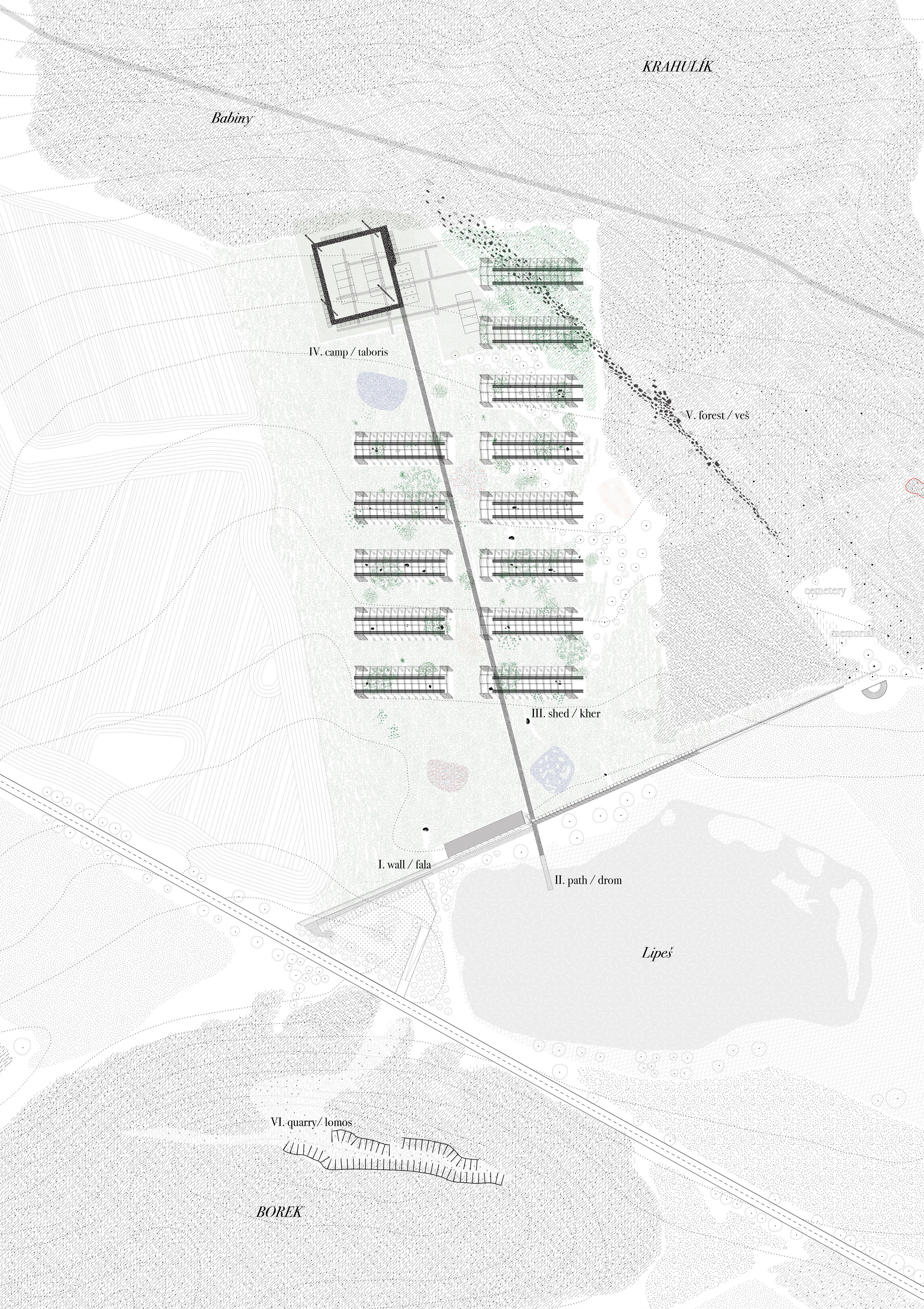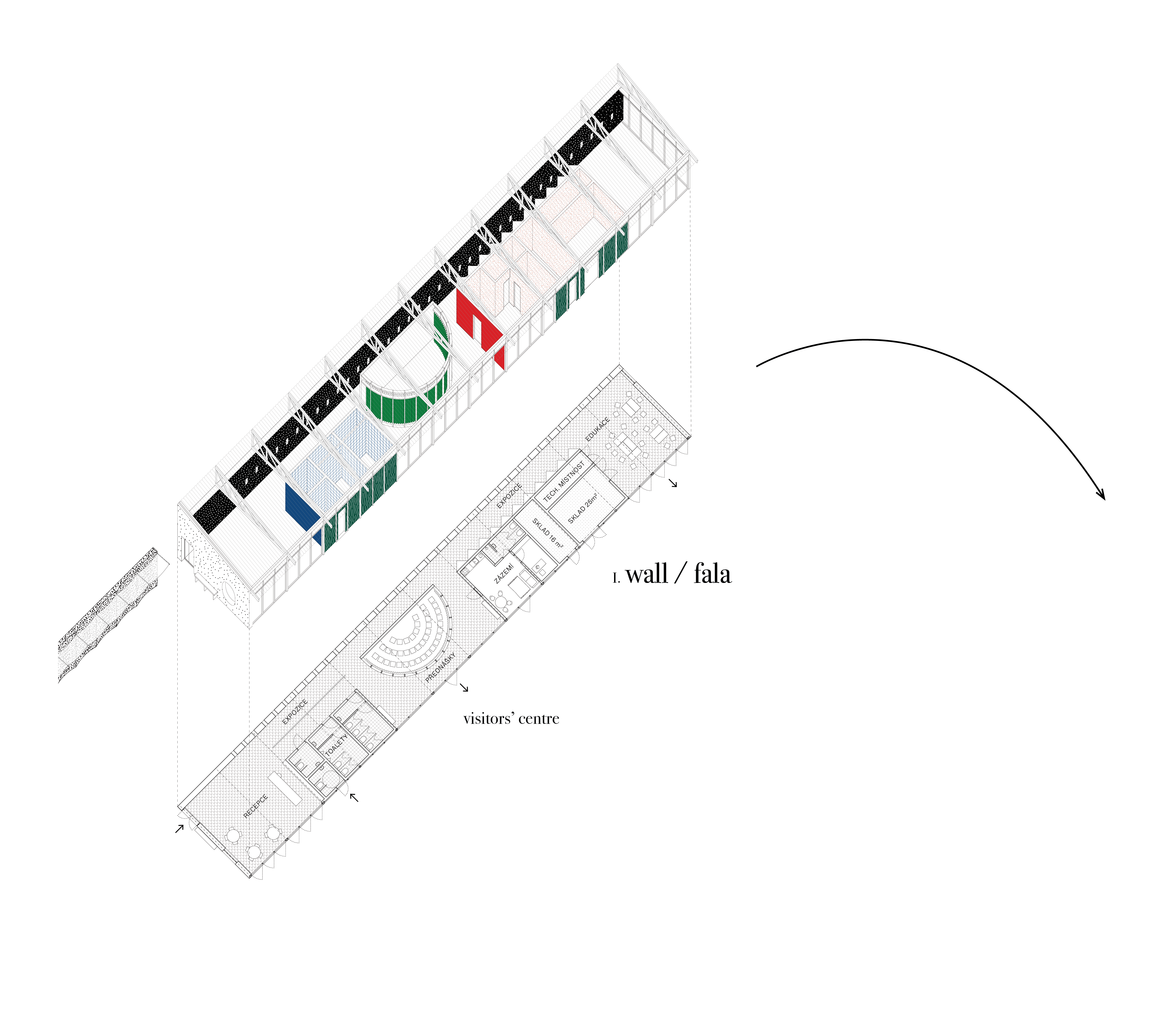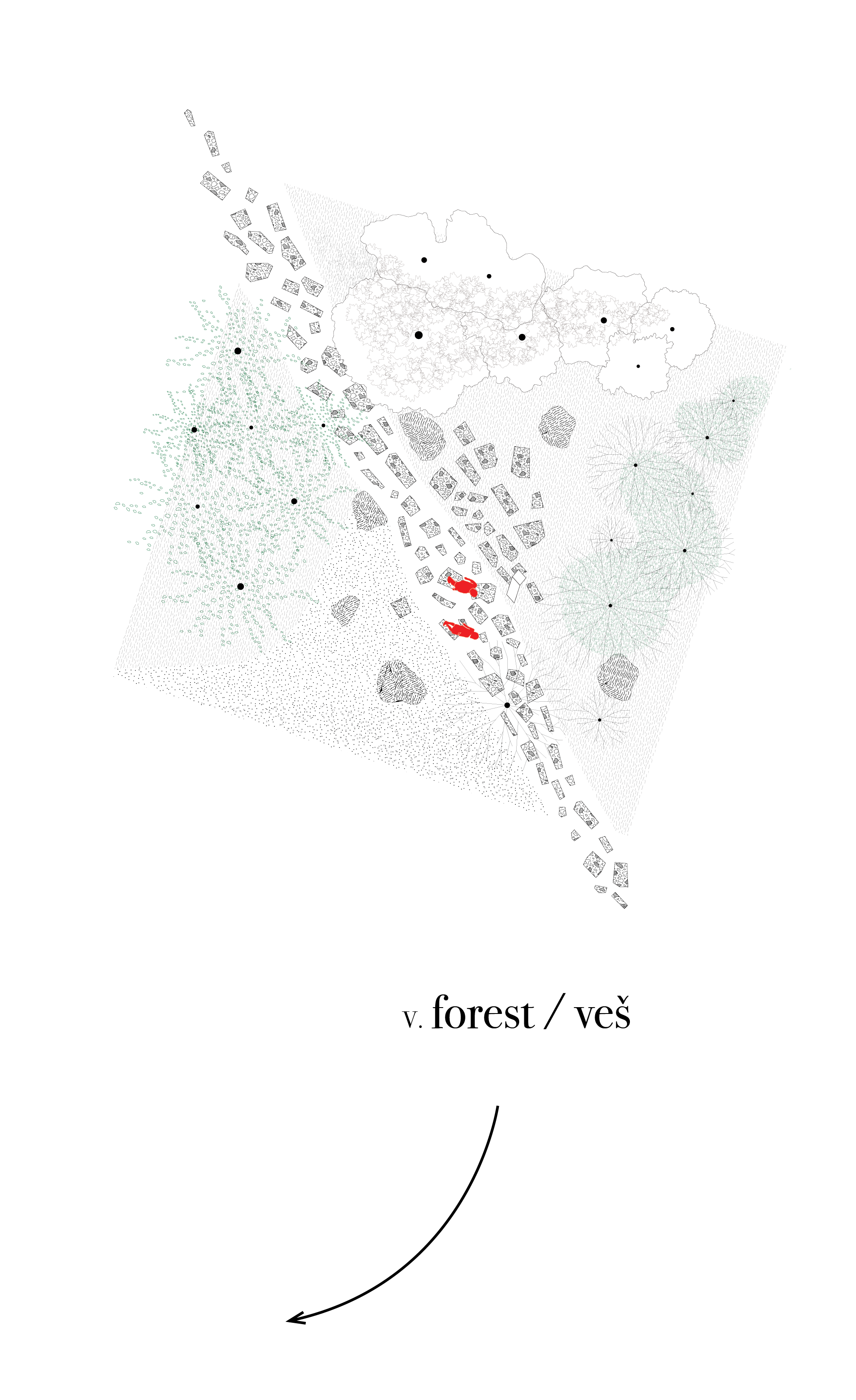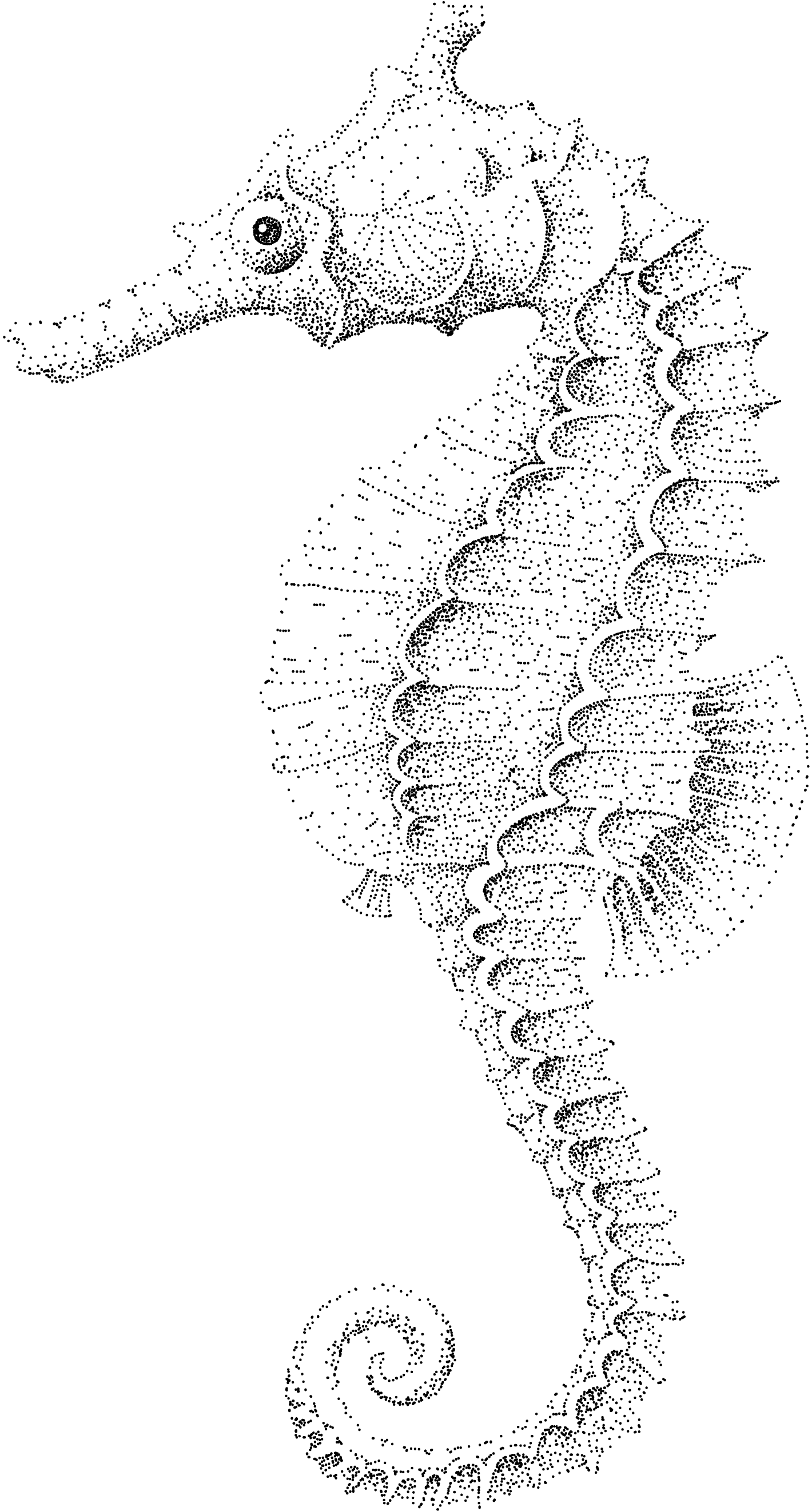Memorial of Roma and Sinti Holocaust
Lety u Písku
As a result of historical events occurring in this former area of a concentration camp for Roma and Sinti people of Czechoslovakia, it was predetermined to become archaeology of various layers. Architecture is a medium of collective memory and it has a potential to become a link between past and present. We can find a parallel in collective memory and Roma culture especially in Roma language where unused words are forgotten and lost since it is not a literary language. In our proposal, we are revealing some layers and omitting other ones at the same time. Memorial itself is dispersed and creates a landscape of heterogeneous elements where every fragment fits historical jigsaw. Nature becomes an integral part of it and its ephemerality expresses fragility of life and time as well. Archaeology here is not understood as a dead past but rather an active present that disrupts a traditional comprehension of dehumanized memorial. An important part of the proposal is landscape modification consisting of founding meadows or planting trees and these could be carried out by collective workshops. Future visitors are involved in creation of the memorial and will become an active component of it, instead of passive receivers of given historical facts. Finally, the function of the memorial exceeds its original function and turns into living cultural locus of society.

Memorial site could be read in the following layers. Wall / fala (in Roma language) is a new contemporary layer that separates the world of living and dead. It is articulated by three functions: separation, exhibition and commemoration. Path / drom is a direct connection between the lake (first cleaning for newcomers) and original camp where atmospheres are changing when visitors ascend to the top. Sheds / kher (former pig farms) are an integral part of the landscape as historical legacy and burden. They are grown through lush vegetation and become a landscape as well. Camp / taboris is defined by original perimeter of main gravel route. In its inside are four wooden poles referring to previous gas lamps. Adjacent forest / veš constitutes an intimate connection from the camp to the burial grounds. Quarry / lomos as direct evidence of forced labour and clear scar of the landscape. This layer is considered as the next step in future development.











________
in Brno, 2020
together with Ondřej Hanuš
︎ PROKOP MATĚJ 2025 ︎

